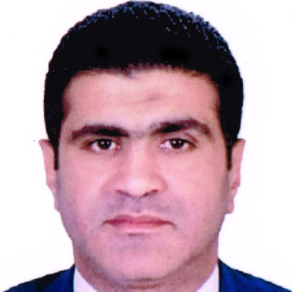International Journal of Computer Network and Information Security (IJCNIS)
IJCNIS Vol. 13, No. 2, 8 Apr. 2021
Cover page and Table of Contents: PDF (size: 417KB)
An Optimized Protocol of M2M Authentication for Internet of Things (IoT)
Full Text (PDF, 417KB), PP.29-38
Views: 0 Downloads: 0
Author(s)
Index Terms
Resource-Constrained Devices (RCD), Automated Validation of Internet Security Protocols and Applications tools(AVISPA), Internet of Things (IoT), Elliptic curve cryptography (ECC), Public Key Cryptography (PKC)
Abstract
The Internet of Things (IoT) consists of sensors, networks, and services to connect and control production systems. Machine-to-Machine (M2M) communication technology is considered as a key underlying technology for building Industrial IoT environments where devices are enabled to exchange information with each other in an autonomous way without human intervention. Resource-Constrained Devices (RCD) have found an expanding demand in the Internet of Things (IoT) applications as these gadgets are essentially working with delicate information. Thus, information security has ended up vital for both makers and clients. However, the creation of defenseless gadgets still challenging regarding the restriction of involved assets especially with the attackers ‘continuous trials to misuse these restrictions chasing important information. Hence, connecting an open key crypto-system becomes a must to extend gadget proficiency and relieve the chance of touchy data loss. Deployments of Elliptic curve cryptography (ECC) are fundamentally an open key crypto-system with the basic distinction of speedier advancing capacity whereas yielding an assortment of distinctive approaches to the arrangement of the cryptographic calculation. We will submit a proposed protocol to overcome the demands of information security and the speed of data circulation. The proposed protocol is characterized by low computational cost, communication and storage overhead, while achieving mutual authentication, session key agreement, device’s identity confidentiality, and resistance against various attacks.
Cite This Paper
Mohamed M. Samy, Wagdy R. Anis., Ahmed A. Abdel-Hafez, Haitham D. Eldemerdash, "An Optimized Protocol of M2M Authentication for Internet of Things (IoT)", International Journal of Computer Network and Information Security(IJCNIS), Vol.13, No.2, pp.29-38, 2021. DOI: 10.5815/ijcnis.2021.02.03
Reference
[1] Rashid G. Alakbarov, Mammad A. Hashimov,"Application and Security Issues of Internet of Things in Oil-Gas Industry", International Journal of Education and Management Engineering, Vol.8, No.6, pp.24-36, 2018.
[2] Jyotir Moy Chatterjee, Raghvendra Kumar, Manju Khari, Dao Thi Hung, Dac-Nhuong Le,"Internet of Things based system for Smart Kitchen", International Journal of Engineering and Manufacturing, Vol.8, No.4, pp.29-39, 2018.
[3] Nissa Mehibel, M’hamed Hamadouche ,"A New Approach of Elliptic Curve Diffie- Hellman Key Exchange", The 5th International Conference on Electrical Engineering – Boumerdes (ICEE-B) October 29-31, 2017, Boumerdes, Algeria.
[4] Tanushree Banerjee and M. Anwar Hasan," Energy Efficiency Analysis of Elliptic Curve based Cryptosystems" , 2018 17th IEEE International Conference On Trust, Security And Privacy In Computing And Communications , 12th IEEE International Conference On Big Data Science And Engineering.
[5] Syed Kashan Ali Shah, Waqas Mahmood, " Smart Home Automation Using IOT and its Low Cost Implementation ", International Journal of Engineering and Manufacturing, Vol.10, No.5, pp.28-36, 2020.
[6] Technical Guideline BSI TR-03111,"Elliptic Curve Cryptography", Version 2.10 , 1 June – 2018.
[7] P. Gope, “Anonymous mutual authentication with location privacy support for secure communication in M2M home network services,” Journal of Ambient Intelligence and Humanized Computing, pp. 1–9, 2017.
[8] M. Liu et al., “TBAS: Enhancing wi-fi authentication by actively eliciting channel state information,” in IEEE Int. Conf. Sensing, Commun. and Netw. (SECON), June 2016, pp. 1–9.
[9] M. Pospl and R. Mark, “Experimental study of wireless transceiver authentication using carrier frequency offset monitoring,” in Int. Conf. Radioelektronika (RADIOELEKTRONIKA), April 2015, pp. 335–338.
[10] F. Liu et al., “A two dimensional quantization algorithm for CIR-based physical layer authentication,” June 2013, pp. 4724–4728.
[11] X. Wu et al., “Artificial-noise-aided physical layer phase challenge response authentication for practical OFDM transmission,” IEEE Trans. Wireless Commun., vol. 15, no. 10, pp. 6611–6625, Oct 2016.
[12] R. Melki, H. N. Noura, M. M. Mansour, and A. Chehab, “A survey on ofdm physical layer security,” Physical Communication, vol. 32, pp. 1 – 30, 2019.
[13] AnujSehgal, Vladislav Perelman, SiarheiKuryla, and Jürgen Schönwälder, "Management of Resource Constrained Devices in the Internet of Things", Jacobs University Bremen , IEEE Communications Magazine , December 2012.
[14] Md. Yosuf Zamil, and Ditee Yasmeen, "Prime Field over Elliptic Curve Cryptographyfor Secured Message Transaction", International Journal of Computer Science and Mobile Computing, Vol.5 Issue.9, September- 2016, pg. 81-88.
[15] William Stallings ,"Cryptography And Network Security", Fifth Edition , 2011 .
[16] Liu, R.; Wang, J. Internet of Things: Application and Prospect. In MATEC Web of Conferences; Zhao, L., Xavior, A., Cai, J., You, L., Eds.; EDP Sciences France: Les Ulis, France, 2017; Volume 100, p. 02034.
[17] Taynitskiy, V.; Gubar, E.; Zhu, Q. Optimal impulse control of bi-virus SIR epidemics with application to heterogeneous Internet of Things. In Proceedings of the 2017 Constructive Nonsmooth Analysis and Related Topics (CNSA), St. Petersburg, Russia, 22–27 May 2017.
[18] Rajakumari, S.; Azhagumeena, S.; Devi, A.B.; Ananthi, M. Upgraded living think-IoT and big data. In Proceedings of the 2017 2nd International Conference on Computing and Communications Technologies (ICCCT), Chennai, India, 23–24 February 2017.
[19] Dineshkumar, P.; SenthilKumar, R.; Sujatha, K.; Ponmagal, R.; Rajavarman, V. Big data analytics of IoT based Health care monitoring system. In Proceedings of the 2016 IEEE Uttar Pradesh Section International Conference on Electrical, Computer and Electronics Engineering (UPCON), Varanasi, India, 9–11 December 2016.
[20] Shang, W.; Yu, Y.; Droms, R.; Zhang, L. Challenges in IoT Networking via TCP/IP Architecture; Technical Report 04, NDN, Technical Report NDN-0038; Named Data Networking . Available online: http://nameddata.net/techreports.html (accessed on 10 August 2018).
[21] Khan, R.; Khan, S.U.; Zaheer, R.; Khan, S. Future Internet: The Internet of Things Architecture, Possible Applications and Key Challenges. In Proceedings of the 2012 10th International Conference on Frontiers of Information Technology, Islamabad, India, 17–19 December 2012.
[22] Weyrich, M.; Ebert, C. Reference Architectures for the Internet of Things. IEEE Softw. 2016, 33, 112–116. [CrossRef]
[23] Bauer, M.; Boussard, M.; Bui, N.; Loof, J.D.; Magerkurth, C.; Meissner, S.; Nettsträter, A.; Stefa, J.; Thoma, M.; Walewski, J.W. IoT Reference Architecture. In Enabling Things to Talk; Springer: Berlin/Heidelberg, Germany, 2013; pp. 163–211.
[24] Mashal, I.; Alsaryrah, O.; Chung, T.Y.; Yang, C.Z.; Kuo, W.H.; Agrawal, D.P. Choices for interaction with things on Internet and underlying issues. Ad Hoc Netw. 2015, 28, 68–90. [CrossRef]
[25] Said, O.; Masud, M. Towards Internet of things: Survey and future vision. Int. J. Comput. Netw. 2013, 5, 1–17.
[26] Wu, M.; Lu, T.J.; Ling, F.Y.; Sun, J.; Du, H.Y. Research on the architecture of Internet of Things. In Proceedings of the 2010 3rd International Conference on Advanced Computer Theory and Engineering (ICACTE), Chengdu, China, 20–22 August 2010.
[27] Nastase, L. Security in the Internet of Things: A Survey on Application Layer Protocols. In Proceedings of the 21st International Conference on Control Systems and Computer Science (CSCS), Bucharest, Romania, 29–31 May 2017; pp. 659–666.
[28] Wang, F.; Hu, L.; Zhou, J.; Zhao, K. A data processing middleware based on SOA for the Internet of things. J. Sens. 2015, 2015, 827045. [CrossRef]
[29] Spiess, P.; Karnouskos, S.; Guinard, D.; Savio, D.; Baecker, O.; de Souza, L.M.S.; Trifa, V. SOA-Based Integration of the Internet of Things in Enterprise Services. In Proceedings of the 2009 IEEE International Conference on Web Services, Los Angeles, CA, USA, 6–10 July 2009.
[30] Sethi, P.; Sarangi, S.R. Internet of things: Architectures, protocols, and applications. J. Electr. Comput. Eng.2017, 2017, 9324035. [CrossRef]
[31] Mario Frustaci, Pasquale Pace, “Evaluating Critical Security Issues of the IoT World: Present and Future Challenges”, IEEE INTERNET OF THINGS JOURNAL, VOL. 5, NO. 4, AUGUST 2018, pp. 2483-2495.
[32] Syed Rizvi, Joseph Pfeffer III, Andrew Kurtz, Mohammad Rizvi, “Securing the Internet of Things (IoT): A Security Taxonomy for IoT” 17th IEEE International Conference On Trust, Security and Privacy in Computing and Communications/ 12th IEEE International Conference On Big Data Science and Engineering, 2018, pp 163-168.
[33] Sudeendra kumar K, Sauvagya Sahoo, Abhishek Mahapatra, “Security Enhancements to System on Chip Devices for IoT Perception Layer”, IEEE International Symposium on Nanoelectronic and Information Systems, 2017, pp 151-156.
[34] Trusit Shah, S. Venkatesan, “Authentication of IoT Device and IoT Server Using Secure Vaults”, 17thIEEE International Conference On Trust, Security and Privacy in Computing and Communications/ 12th IEEE International Conference On Big Data Science and Engineering, 2018, pp 819-824.
[35] Santhosh Krishna B V, Gnanasekaran T, “A Systematic Study of Security Issues in Internet -ofThings (IoT)”, International conference on I-SMAC (IoT in Social, Mobile, Analytics and Cloud), 2017, pp. 107-111.
[36] Sowmya Nagasimha Swamy, Dipti Jadhav, Nikita Kulkarni, “Security Threats in the Application layer in IOT Applications”, International conference on I-SMAC (IoT in Social, Mobile, Analytics and Cloud), 2017, pp. 477-480.



